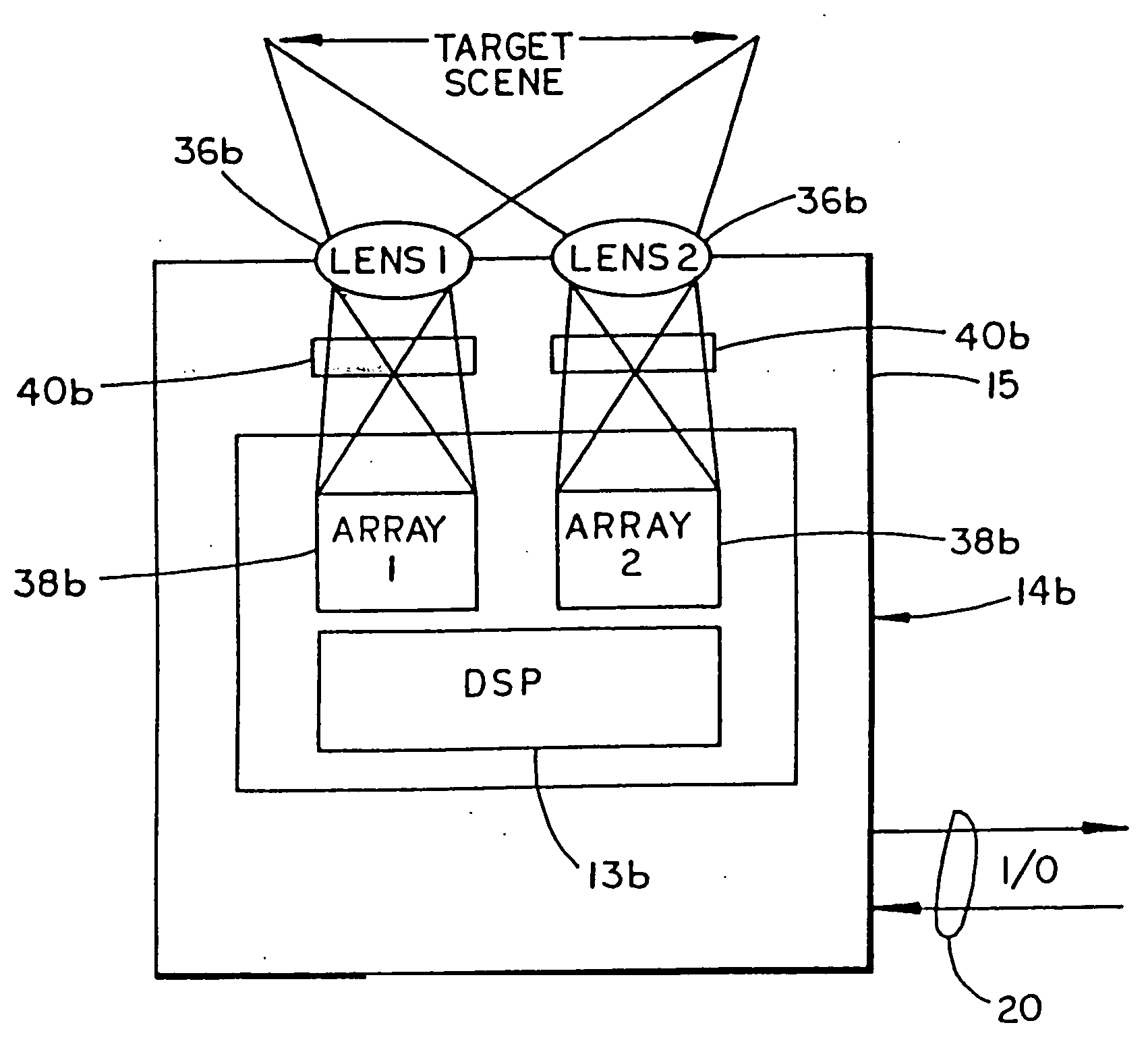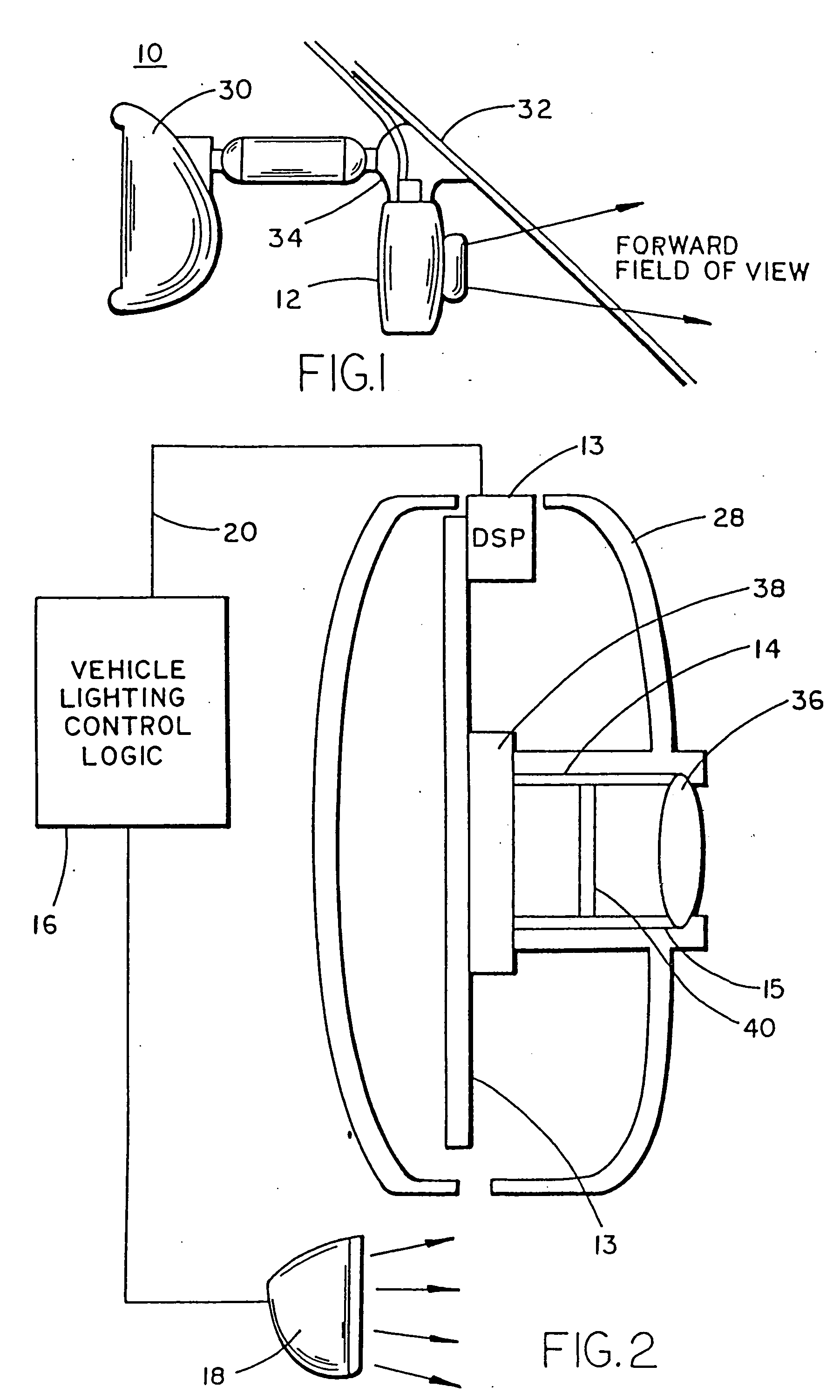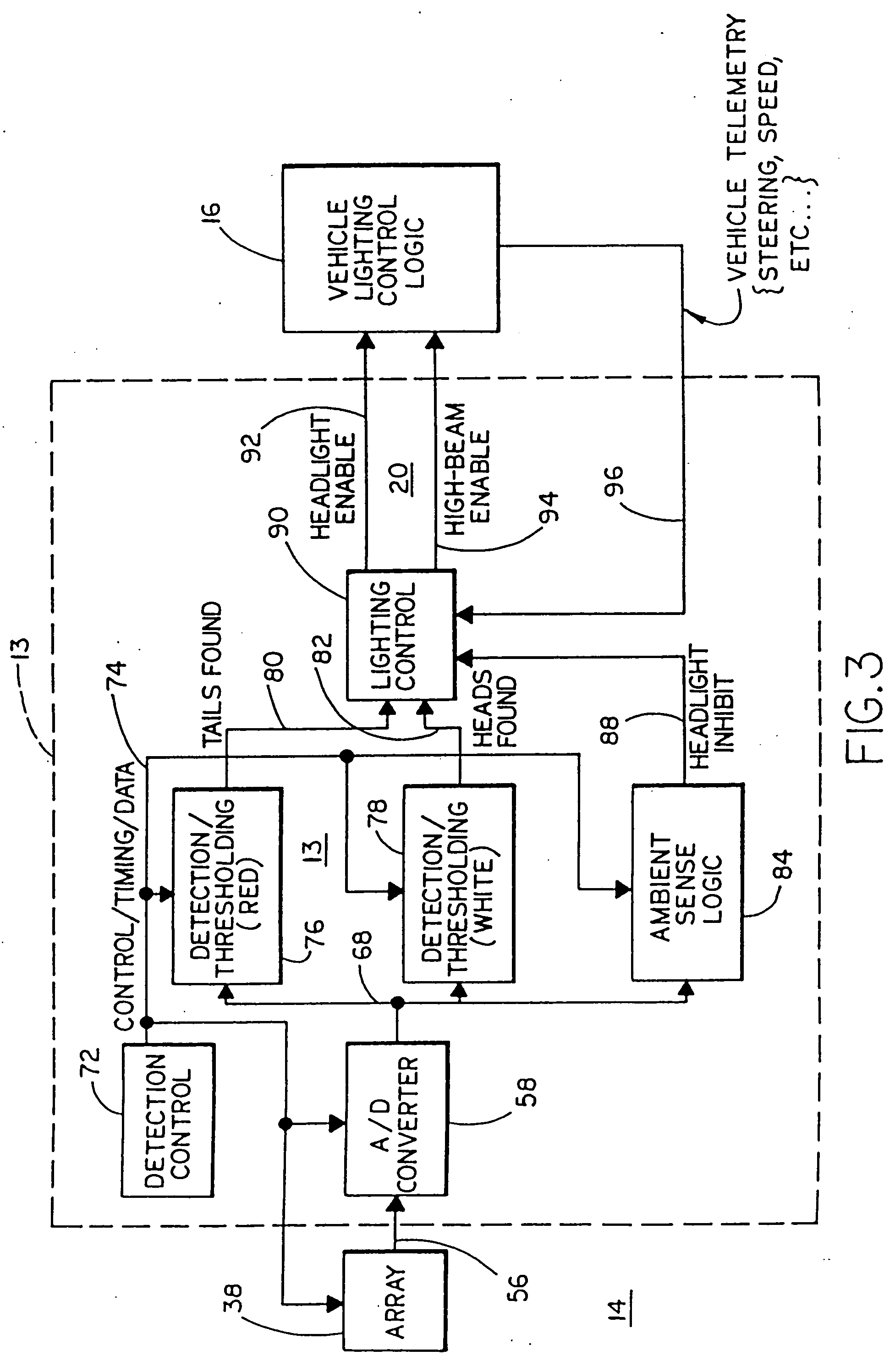Vehicle headlight control using imaging sensor
a technology of imaging sensor and headlight control, which is applied in the direction of vehicle cleaning, optical radiation measurement, instruments, etc., can solve the problems of ineffective approaches, inability to reliably detect the taillights of leading vehicles, and ineffective prior art vehicle headlight dimming controls
- Summary
- Abstract
- Description
- Claims
- Application Information
AI Technical Summary
Benefits of technology
Problems solved by technology
Method used
Image
Examples
Embodiment Construction
[0024] Referring now specifically to the drawings and the illustrative embodiments depicted therein, a vehicle 10 includes a vehicle headlight dimming control 12 made up of an imaging sensor module 14 which senses light from a scene forward of vehicle 10, an imaging control circuit 13 which receives data from sensor 14, and a vehicle lighting control logic module 16 which exchanges data with control circuit 13 and controls headlamps 18 for the purpose of modifying the headlight beam (FIGS. 1 and 2). Such control may be a binary control of the aim of the beam, such as by switching between lamps or lamp filaments, or may be a continuous variation of the aim of a single lamp more or less forward of the vehicle. The control may also control the intensity or pattern of the beam. Additionally, the lights of a vehicle equipped with daytime running lights may be switched between a daytime running light condition and a low-beam condition. Vehicle headlight dimming control 12 can perform a wi...
PUM
 Login to View More
Login to View More Abstract
Description
Claims
Application Information
 Login to View More
Login to View More - R&D
- Intellectual Property
- Life Sciences
- Materials
- Tech Scout
- Unparalleled Data Quality
- Higher Quality Content
- 60% Fewer Hallucinations
Browse by: Latest US Patents, China's latest patents, Technical Efficacy Thesaurus, Application Domain, Technology Topic, Popular Technical Reports.
© 2025 PatSnap. All rights reserved.Legal|Privacy policy|Modern Slavery Act Transparency Statement|Sitemap|About US| Contact US: help@patsnap.com



